
views
Organizing Your Introduction
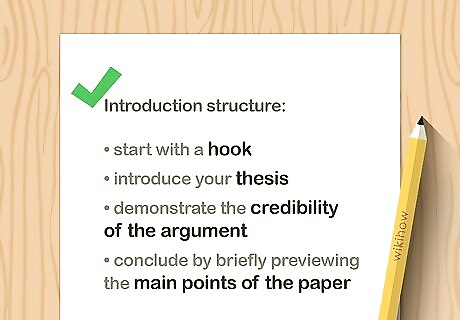
Start off with a hook to grab the audience’s attention. In order to persuade the audience, you’ll need their undivided attention. Unfortunately, people tend to tune out what someone’s saying if they don’t find it to be interesting. That’s why it’s really important that you kick off your speech with something attention-grabbing (but still relevant to your topic), like a shocking statistic, funny anecdote, or powerful quote. For example, if your speech is about sleep deprivation in the workplace, you could start with something like “Workplace accidents and mistakes related to sleep deprivation cost companies $31 billion every single year.” Or, if your speech is about animal rights, you could open with a quote like “The English philosopher Jeremy Bentham once said, ‘The question is not, Can they reason? Nor, Can they talk? But, Can they suffer?’” For a speech about unpaid internships, you could start with a relevant anecdote like “In 2018, Tiffany Green got her dream internship, unpaid, working for a rental company. Unfortunately, a few months later Tiffany returned home from work to find an eviction notice on the door of her apartment, owned by that same rental company, because she was unable to pay her rent.

Introduce your thesis statement. Now that you’ve written something that will grab your audience’s attention, it’s time to introduce them to the main argument you’ll be making in your speech. Your thesis statement should clearly explain what argument you’re making and what side of the argument you want your audience to end up on. Make sure you choose something specific and clear since a thesis statement that’s too broad will be hard for your audience to follow along with. For example, your thesis statement could look something like “Today, I’m going to talk to you about why medical marijuana should be legalized in all 50 states, and I’ll explain why that would improve the lives of average Americans and boost the economy.”

Demonstrate to the audience that your argument is credible. Once you’ve introduced your thesis statement, you want to convince your audience that they should believe what you’re saying. If you’re an expert on the subject, informing the audience of your credentials should be enough. However, if you’re writing a persuasive speech about a topic you're not an expert on, you can still demonstrate credibility by referencing specific periodicals, books, and experts in the field. For example, if you’re a marine biologist who’s writing a persuasive speech about ocean acidification, you could write something like “I’ve studied the effects of ocean acidification on local marine ecosystems for over a decade now, and what I’ve found is staggering.” Or, if you’re not an expert on your topic, you could include something like “Earlier this year, renowned marine biologist Ayana Elizabeth Johnson published a decade-long study on the acidification of our oceans, and what she found is deeply concerning.”
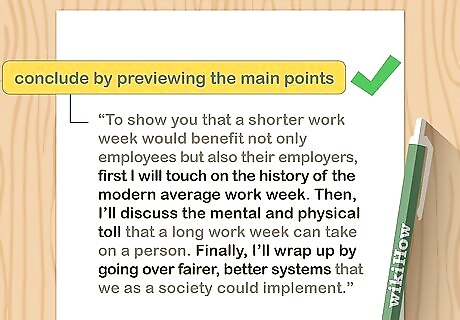
Conclude your introduction by briefly previewing the main points you’ll cover. You want to prepare your audience for the rest of your speech so they know what to expect and have an easier time following along. Keep the preview of your main points brief, but make sure you include each point you’ll be making in the order it will appear. For example, you could sum up your conclusion by writing something like, “To show you that a shorter work week would benefit not only employees but also their employers, first I will touch on the history of the modern average work week. Then, I’ll discuss the mental and physical toll that a long work week can take on a person. Finally, I’ll wrap up by going over fairer, better systems that we as a society could implement.”
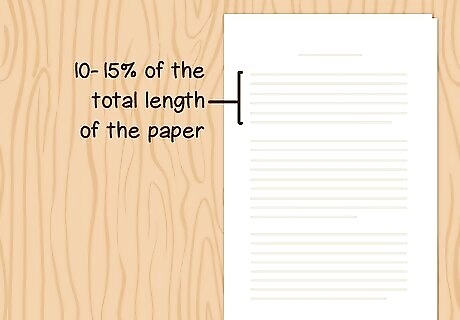
Limit your introduction to 10-15% of the total length of your speech. An introduction that’s too long can bore your audience, and it takes away from the time you have to make your argument. The right length for your introduction will depend on the total length of your speech, so you may need to adjust it when you’re finished. Generally, the longer your speech, the longer your introduction can be. For example, if you time yourself giving your speech (introduction included) and it takes you 5 minutes, your introduction should only take up about 45 seconds of your speech. However, if you were giving a speech that’s 20 minutes long, your introduction should be around 3 minutes. On average, you’ll want about 150 words for every 1 minute you need to speak for. For example, if your introduction should be 2 minutes, you’d want to write around 300 words.Tip: If you know how long your speech is going to be before you write it, make the first draft of your introduction the right length so you don’t have to add or delete a lot later.
Polishing Your Writing

Write in a conversational tone. Unlike most essays, a speech is written to be read out loud, and your audience will be more engaged if they feel like you’re having a conversation with them. As you’re writing your introduction, imagine you’re talking to someone and trying to convince them of your point as opposed to writing a research paper. Just make sure your introduction is still authoritative and professional. To make your writing more conversational, try to use brief sentences, and avoid including jargon unless you need it to make your point. Using contractions, like “I’ll” instead of “I will,” “wouldn’t” instead of “would not,” and “they’re” instead of “they are,” can help make your writing sound more conversational.
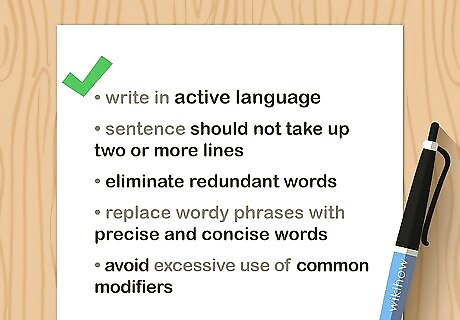
Be concise when you’re writing your introduction. Being concise is especially important when you’re writing a speech since you want to hold your audience’s attention. Long, convoluted sentences will make your introduction hard to follow, and you risk people tuning out. Make sure you don’t include more sentences than necessary when you’re writing the different components of your speech.Tip: An easy way to make your writing more concise is to start your sentences with the subject. Also, try to limit the number of adverbs and adjectives you use.
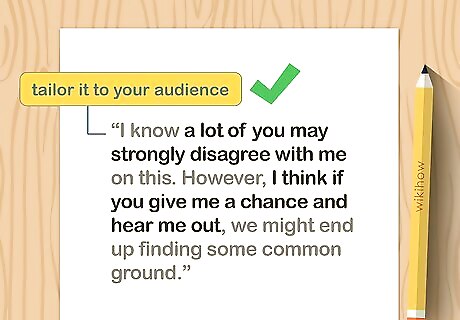
Tailor your writing to your audience. Being aware of your audience while you’re writing will help you craft a more persuasive message. As you’re writing the introduction to your speech, think about who will be listening when you deliver it, and use that to help you decide what information and strategy you’ll use. For example, if your audience will be made up of the other students in your college class, including a pop culture reference in your introduction might be an effective way to grab their attention and help them relate to your topic. However, if you’re giving your speech in a more formal setting, a pop culture reference might fall flat.

Connect with your audience. It will be easier to persuade your audience if they feel like they’re having a conversation with you as opposed to listening to a lecture. To help them feel like they’re a part of the conversation, don’t be afraid to reference them or directly speak to them in your introduction. For example, you could write something like, “I know a lot of you may strongly disagree with me on this. However, I think if you give me a chance and hear me out, we might end up finding some common ground.” Or, you could include a question like “How many of you here tonight have ever come across plastic that's washed up on the beach?” Then, you can have audience members raise their hands.

Practice reading your introduction out loud. Reading the introduction to your persuasive speech out loud is a great way to catch any awkward language and complicated sentences. If you find yourself stumbling over a certain section, stop and revise it. Keep practicing like this until you can confidently read through your introduction and everything flows together nicely. You can even record yourself reading your introduction to get a sense of how you'll look delivering the opening of your speech.



















Comments
0 comment